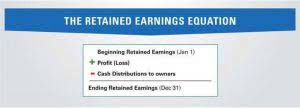Only when 590 smoothies are sold does something remain from the contribution margin, so that a profit is then made. While the contribution margin indicates the profitability of a product, the gross margin shows the amount of turnover remaining after all production costs have been deducted. To calculate the contribution margin, we must deduct the variable cost per unit from the price per unit. The formula to calculate the contribution margin is equal to revenue minus variable costs. Let’s say we have a company that produces 100,000 units of a product, sells them at $12 per unit, and has a variable costs of $8 per unit. This means that the production of grapple grommets produce enough revenue to cover the fixed costs and still leave Casey with a profit of $45,000 at the end of the year.
The contribution margin ratio is calculated as (Revenue – Variable Costs) / Revenue. The contribution margin can help company management select from among several possible products that compete to use the same set of manufacturing resources. Do you still struggle to identify which products are actually pulling their weight and which ones are silently draining your resources? Financial reports may give you the numbers but not always the clarity you need to make fast, strategic decisions.
At a contribution margin ratio of \(80\%\), approximately \(\$0.80\) of each sales dollar generated by the sale of a Blue Jay Model is available to cover fixed expenses and contribute to profit. The contribution margin ratio for the birdbath implies that, for every \(\$1\) generated by the sale of a Blue Jay Model, they have \(\$0.80\) that contributes to fixed costs and profit. Thus, \(20\%\) of each sales dollar represents the variable cost of the item and \(80\%\) of the sales dollar is margin. Just as each product or service has its own contribution margin on a per unit basis, each has a unique contribution margin ratio. Cost volume profit (CVP) analysis is a managerial accounting technique used to determine how changes in sales volume, variable costs, fixed costs, and/or selling price per unit affect a business’s operating income.
In our example, the sales revenue from one shirt is \(\$15\) and the variable cost of one shirt is \(\$10\), so the individual contribution margin is \(\$5\). This \(\$5\) contribution margin is assumed to first cover fixed costs first and then realized as profit. It provides one way to show the profit potential of a particular product offered by a company and shows the portion of sales that helps to cover the company’s fixed costs.
How to Calculate Contribution per Unit
She holds a Bachelor of Science in Finance degree from Bridgewater State University and helps develop content proper way to record lotto sales, commission and payouts strategies.
Contribution margin: How to calculate
Take your learning and productivity to the next level with our Premium Templates. Get instant access to video lessons taught by experienced investment bankers. Learn financial statement modeling, DCF, M&A, LBO, Comps and Excel shortcuts.
- To illustrate how this form of income statement can be used, contribution margin income statements for Hicks Manufacturing are shown for the months of April and May.
- The contribution margin formula is calculated by subtracting total variable costs from net sales revenue.
- All you have to do is multiply both the selling price per unit and the variable costs per unit by the number of units you sell, and then subtract the total variable costs from the total selling revenue.
- Either way, this number will be reported at the top of the income statement.
Contribution margin Formula and analysis
For example, in retail, many functions that were previously performed by people are now performed by machines or software, such as the self-checkout counters in stores such as Walmart, Costco, and Lowe’s. Since machine and software costs are often depreciated or amortized, these costs tend to be the same or fixed, no matter the level of activity within a given relevant range. A key characteristic of the contribution margin is that it remains fixed on a per-unit basis irrespective of the number of units manufactured or sold. On the other hand, the net profit per unit may increase/decrease non-linearly with the number of units sold, as it includes the fixed costs. Contribution margin may also be expressed as a ratio, showing the percentage of sales that is available to pay fixed costs.
Costs to Include in Contribution Per Unit
The contribution margin is a measurement through which we understand how much a company’s net sales will contribute to the fixed expenses and the net profit after covering the variable expenses. So, we deduct the total variable expenses from the net sales while calculating the contribution. Similarly, we can then calculate the variable cost per unit by dividing the total variable costs by the number of products sold.
- The contribution margin is the foundation for break-even analysis used in the overall cost and sales price planning for products.
- In such cases, the price of the product should be adjusted for the offering to be economically viable.
- If they send nine to sixteen students, the fixed cost would be \(\$400\) because they will need two vans.
- This concept is especially helpful to management in calculating the breakeven point for a department or a product line.
Contribution margin looks similar to gross profit, which is sales minus cost of goods sold, but cost of goods sold includes fixed and variable costs. We’ll explore this in more depth when we talk about variable costing vs. full-absorption costing later in this module. Gross margin is the difference between revenue and the cost of goods sold (COGS).
Contribution Margin Per Unit
Very low or negative contribution margin values indicate economically nonviable products whose manufacturing and sales eat up a large portion of the revenues. Alternatively, the company can also try finding ways to improve revenues. However, this strategy could ultimately backfire and hurt profits if customers are unwilling to pay the higher price. Investors and analysts may also attempt to calculate the contribution margin figure for a company’s blockbuster products. For instance, a beverage company may have 15 different products, but the bulk of its profits may come from one specific beverage.
Variable costs are those costs that change as and when there is a change in the sale. An increase of 10 % in sales results in an increase of 10% in variable costs. The contribution margin is different from the gross profit margin, the difference between sales revenue and the cost of goods sold.
So it is necessary to understand the breakup of fixed and variable cost of any production process. If this business increased production to 20,000 units, the variable costs per unit might decrease to $3 per unit. If the fixed costs remained constant, the selling price could be reduced to $8 and still cover the variable and fixed costs.
These cost components should not be considered while making decisions about cost analysis or profitability measures. The profitability of our company likely benefited from the increased contribution margin per product, as the contribution margin per dollar increased from $0.60 to $0.68. The greater the contribution margin (CM) of each product, the more profitable the company is going to be, with more cash available to meet other expenses — all else being equal.
With that all being said, it is quite obvious why it is worth learning the contribution margin formula. Variable costs tend to represent expenses such as materials, shipping, and marketing. Companies can reduce these costs by identifying alternatives, such as using cheaper materials or alternative shipping providers.
For example, if the cost of raw materials for your business suddenly becomes pricey, then your input price will vary, and this modified input price will count as a variable cost. On the other hand, variable costs are costs that depend on the amount of goods and services a business produces. The more it produces in a given month, the more raw materials it requires. Profit Margin – Assesses overall company profitability after accounting for all expenses, including both fixed and variable costs. Before proceeding with a detailed guide on finding unit contribution margin, the first step is to know your fixed and variable costs. You will use these often, particularly variable costs, to calculate unit contribution margin.








